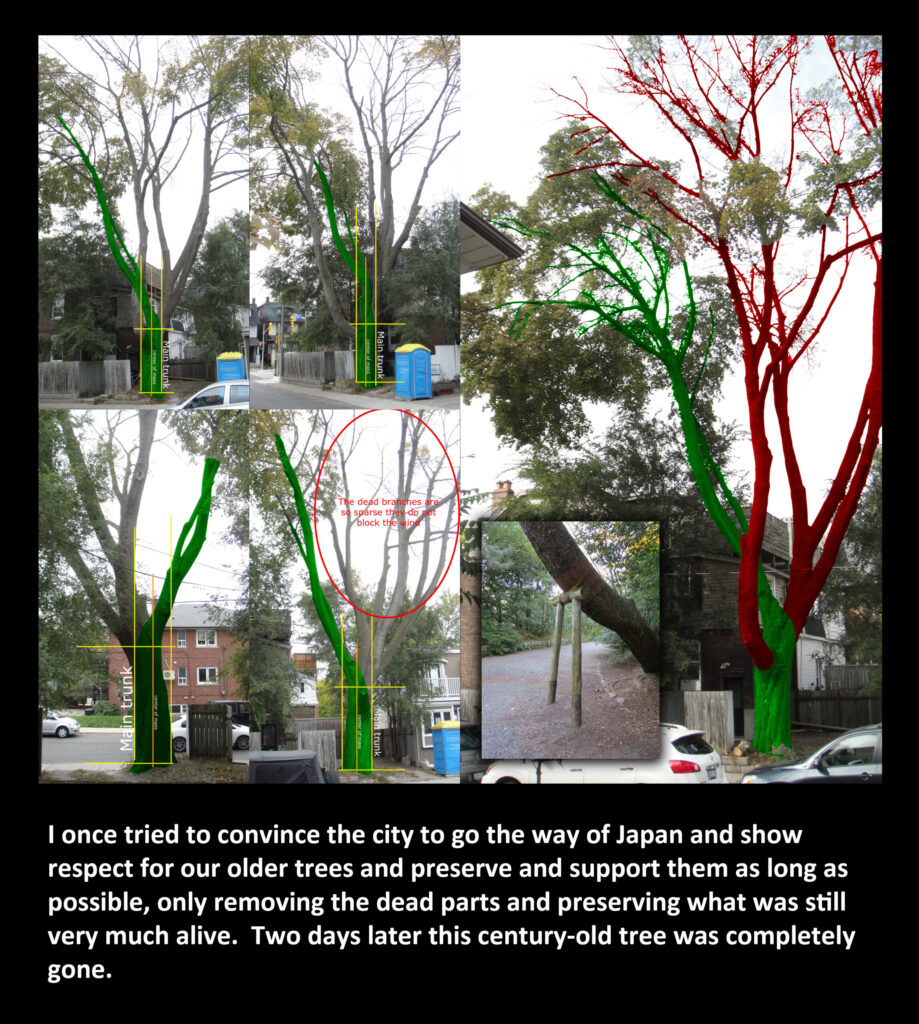Green spaces will be more important than ever in a future of climate change and increased urban density. Toronto must do everything it can to ensure the future of our green spaces.
Preserving Green Space
Green space does not just refer to our parks and gardens, it also refers to all the open undeveloped land in Toronto. We will need as much green space as possible, not just for recreation and other outdoor activities, but for growing food, and also to mitigate the effects of climate change.
The more we pave and build the worse heat builds up and water can’t drain well, not to mention development always leads to a loss of precious tree canopy. Any loss of green space is asking for the climate in our city to worsen, and adding green roofs is no substitute.
When we understand that preserving green space is the key to safeguarding our future, we must admit that further development of any green space is the path to our demise. We need to ban any development on open lands, focusing development strictly in places that are already paved over.
Tree removal policy
I have fought a couple tree removals in our ward. With how many large trees we are losing, along with their superior ability to absorb carbon, and how much younger trees are struggling to mature, Toronto needs to go the route of Japan and support our aging trees while they are still viable, instead of putting them down the first sign of aging.
Just as we fully support our seniors and do everything possible to delay their final moment, so too we must consider using “tree crutches” and other Japanese methods to extend the life of our mature trees as much as possible.
Maintaining Green Space
As part of Friends of the Glen Stewart Ravine I have been involved in a few events to remove invasive species, as well as my work with Rain Gardens United promoting gardens that grow native pollinator plants. This is important to maintaining our green spaces and ensuring monocultures of invasive species do not overtake our native flora.
A great example of the city recognizing the importance of preserving and maintaining our green spaces is the Ravine Strategy. It even offers stewardship grants to volunteer groups, like Friends of Glen Stewart Ravine, to accomplish certain activities like removal of invasive species. Good as this is, it is still a passing of the buck, a way to get residents to do work the city should really be responsible for. Not every neighbourhood has the people we do, people with the time and wherewithal to gather volunteers to help maintain our ravines. We must ensure the city does not come to depend on resident volunteers to do this important work.
Expanding Green Space
As previously mentioned, Toronto already has issues from its lack of green spaces, and it is hard to expand more. The Rail Deck Park was an innovative if expensive way to create a brand new green space downtown, except now it will be more condos, which only worsens the situation. Green roofs help to insulate buildings and contain some rain fall off, but are not typically usable by people.
We must find ways to trade off increased density in one area for reclamation of open land in other areas. We must find mechanisms for targeted de-development, the removal of asphalt and concrete to allow nature to take over again. This is a fair trade-off for increased density, because the impacts of the increased density can be mitigated by increased green space.

